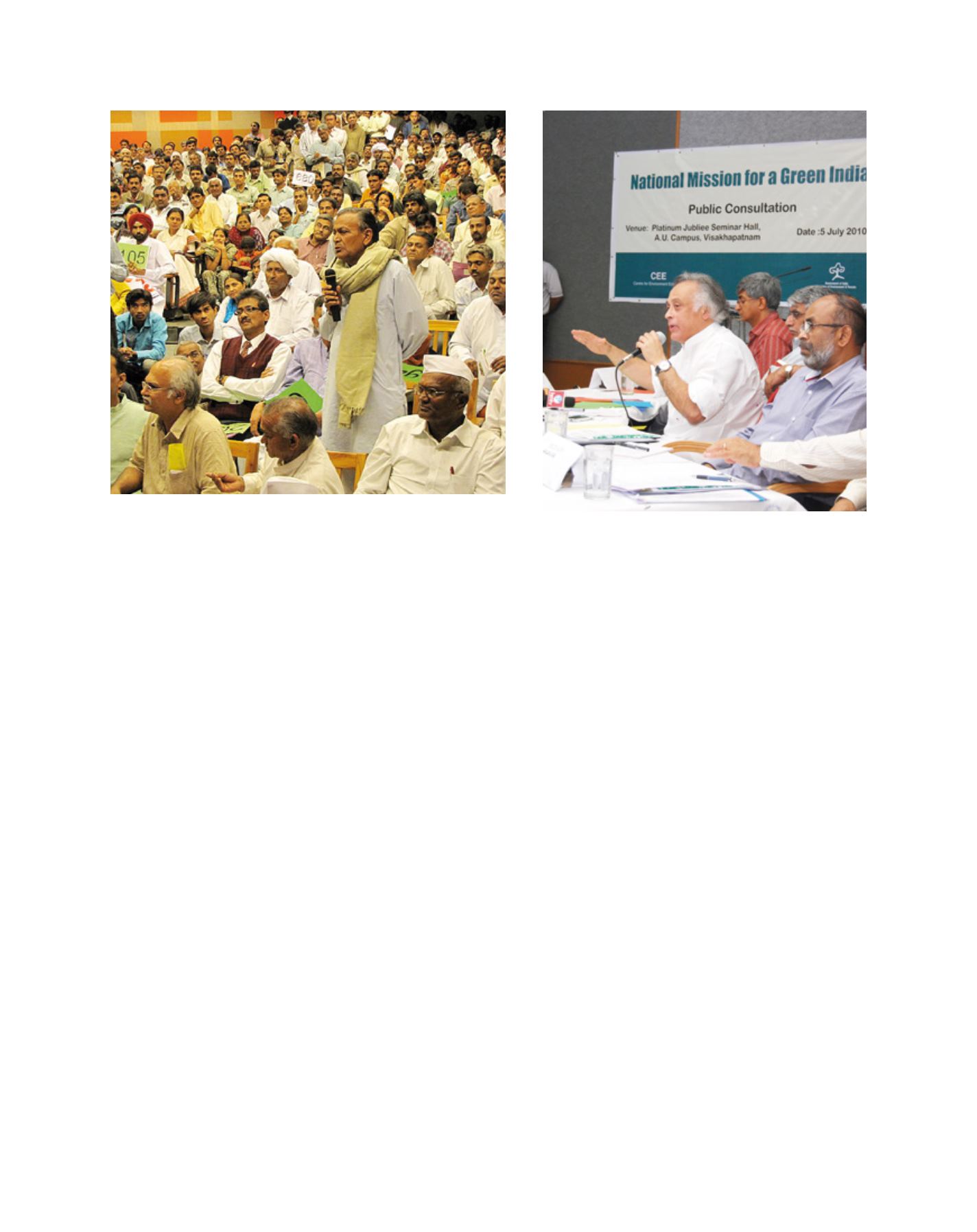

A major tool for ESD that has emerged in India in recent years is the process of
public consultations
Image: CEE
[
] 71
is not the case in a modern society. In addition, in most developing
countries, the use of new substances is not accompanied by any
knowledge of how to dispose of the resulting waste, or any aware-
ness of the impact of improper waste disposal on the environment.
CEE launched a major programme to introduce the concepts of
waste segregation and recycling. As a result of these efforts, several
housing societies now segregate waste and some compost it. Plastic
carry bags are shredded and woven into new products. Office waste
paper is collected and used to make handmade paper. CEE runs a
major bio-medical waste programme and runs a facility to demon-
strate how this can be sustainably and commercially managed.
6. ESD and industries
Historically the word ‘environment’ is a term that has been viewed
with suspicion by industry. Many from this sector felt that protect-
ing the environment could only mean the curtailing of industrial
growth. CEE’s campaign started with the intention of changing this
attitude. The campaign did not use the word ‘pollution’, but spoke
of ‘waste recovery’. It emphasized the efficiencies created by saving
electricity and other resources through better housekeeping and
resource management, as well as the long-term benefits of sustain-
able practices for industry. CEE’s programmes in this area not only
involve training industry personnel but also include direct interven-
tion in instituting sustainable practices at the project level.
Training of professionals who can initiate and manage ESD
programmes also needs to be a critical component of ESD efforts in a
developing country. CEE has partnered with the Gujarat University to
establish a Masters programme in climate change. Several projects today
also advise industry on their corporate social responsibility activities.
7. ESD and public policy
ESD needs to play a very significant role in policy making. While
school and college education will establish the foundation for the
future, daily resource-use decisions need to be made
with sustainability in mind. Through a number of initia-
tives, CEE reaches out to key decision makers in the
government at the local, regional and national levels.
A major tool for ESD that has emerged in India in
recent years is the process of public consultations.
Over the last two years CEE has, on behalf of the
Ministry of Environment and Forests, Government
of India, conducted major public consultations across
India on policy issues relating to coastal zone manage-
ment, the introduction of the genetically modified
eggplant, as well as on a new Green India Mission.
Each of these consultations has attracted tremendous
public participation and feedback, which has resulted
in major modifications in public policy. The success of
these consultations is in no small measure due to the
importance given to these consultations by the govern-
ment and the personal involvement of the Minister for
Environment and Forests, Shri Jairam Ramesh.
Meeting the challenge
ESD encompasses a wide variety of initiatives that
together constitute the overall strategy for sustain-
ability at the local, national and global levels. There are
numerous innovative field level approaches, pioneering
programmes in the formal and non-formal sectors, and
policy initiatives to meet the challenge of sustainability.
The initial years of the DESD have catalysed numerous
programmes with very significant findings. It is now time
to put these together to improve networking and learn
from the experience of others. It is time to plan the last
few years of the DESD and to create institutional mecha-
nisms that propel this activity beyond the Decade.
Participation of decision makers in public consultations
Image: CEE
















